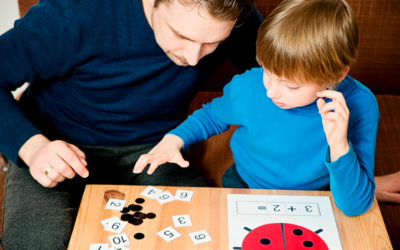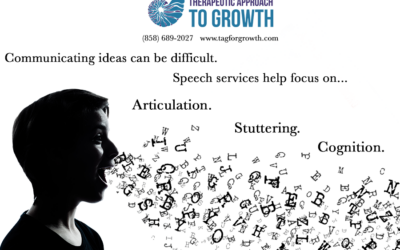The Hidden Foundations For Fine Motor Skills

Fine motor skills
can be defined as the skilled coordination and movement of the small muscles of the hands, fingers, tongue and mouth. Oftentimes parents and teachers can identify difficulties with functional outcomes such as handwriting or self-feeding with a spoon. An occupational therapist can help a parent understand and identify the hidden foundational skill areas that are impacting the child’s growth. The first hidden foundation is called postural control. Similar to how tree roots provide stability to the tree trunk and its branches, adequate abdominal strength is needed before fine motor skills can be refined. If a child is unable to sit at the table on their own, parents can help provide stability by properly positioning their body. Children with poor postural control would benefit from a small chair with back and side supports, both feet touching the ground, and a 90-degree bend in the knees and hips.
Some activities that build postural control are:
-Encourage children to try different positions during play, work, or group time such as lying on their stomach while resting on elbows or side lying
-Have a child sit on a therapy ball or exercise ball rather than a chair (with support from parents as needed). Next comes the trunk of the tree called proximal shoulder and wrist stability.
Many children’s emerging fine motor skills begin with using big movements at the shoulder and wrist for pre-handwriting, feeding themselves, self-care, and play skills. They learn how to refine to movements by adjusting how much of their muscle strength is needed during each daily activity. For example, the amount of muscle work needed for a child to dig in thick, muddy beach sand versus the amount of muscle work used to slowly tilt an open cup to drink without spilling. Some activities that build proximal stability are:
-Painting on a vertical surface (i.e. easel or large paper on the wall).
-Animal walking (crab, bear, etc.).
-Use a spray bottle to water plants or wash away chalk designs.
Another hidden foundation is called touch perception. Imagine playing as a young child and reaching into a large beach bag to find your toy without being able to see what’s inside. Touch perception gives your hands the ability to perceive the shape of an object without looking. If a child has difficulty with this area, it would be similar for them to be wearing a large over-sized gardening glove while trying to find and grasp their toy. They can appear clumsy and will frequently drop small items. This can make self-care activities such as feeding, zippering, and buttoning challenging. Some activities that build touch perception are:
-Help the child find hidden beads in Play-Doh.
-Wash or hide small animals or cars in shaving cream.
The last hidden foundation for fine motor skills is bilateral coordination. Bilateral coordination is a developmental sequence for the use of both hands and legs to perform the same or different actions. Initially, children will learn to use both hands to do the same action such as pulling a shirt over their head. Reciprocal bilateral coordination occurs when they are able to do a different action for each side of the body, such as holding the zipper with the one hand while hooking and pulling a jacket zipper up with the other hand. Bilateral coordination also contributes to developing a hand of preference around the age 2-4 years old and hand dominance around 6 years old. Some activities that build bilateral coordination are:
-Yoga poses.
-Hide treasures inside zip-lock bags and have children open and close the bags.
-Flatten playdoh to make a pizza or hot dog, then cut it using playdoh scissors .
The following is a list of fine motor skills acquired by age:
18 months:
Builds a three block tower
Scribbles spontaneously
Independent with spoon
Independent with open cup
24 months:
Takes off hat, socks, shoes
Zips and unzips without engaging the zipper
Vertical and horizontal lines
Can snip with scissors
3 years:
Hand preference
Copies circle, imitates cross
Builds a nine block tower
Screws a lid on a jar
Places 10 small pellets in a bottle in 30 seconds
Turns a door knob with their forearm muscles
Unbuttons clothing, buttons large buttons
Puts on shoes, but they may be on the wrong feet
Can cut on a line that is 6 inches long
4 years:
Traces diamond with angles rounded
Representational drawing of themselves
Can cut a circle and square
An occupational therapist can help identify the underlying skill areas contributing to fine motor difficulties. At Therapeutic Approach for Growth, the occupational therapists use a child directed, play based, and relationship focused approach to therapy. We frequently use a “just right challenge” to build self-esteem, focus on the relationship with the therapist, and offer developmentally appropriate engaging activities to support the growth process.
Therapeutic Approach to Growth is in network with many insurance companies.
If you have any questions regarding occupational therapy at TAG, Inc. please call us at (858) 689-2027 for more information.
Related Posts
TAG Winter Wonderland 2021
2021 Winter Wonderland Our annual Winter Wonderland Event was held Dec 2021 This event is special for our team and families. We enjoy games, events and treats.Related PostsWe're Here Whenever You Need Us9466 Black Mountain RdSuite 100San Diego, CA 92126 Phone: (858)...
Electronics & Autism
For many, using electronics is like an addiction, because the child feels so much more competent when using electronics than engaging in dynamic interactions.
Feeling Nervous About The Challenges of a New School Year?
Parents all over the world toss and turn with the start of a new school year. Parents of children with special needs have additional fears about the quality of their school, the appropriateness of their child’s placement and the endless worry about making sure their child is able to enjoy meaningful, authentic relationships.
The Importance of the Guided Participation Relationship
Since the beginning of time and observed in every culture in the world, is the Guided Participation Relationship (GPR). The GPR is the authentic collaboration between a more experienced “Guide” and a willing “Apprentice.”
When to seek Speech Therapy for Your Child
While a Speech Language Pathologist (SLP) has many areas of expertise, (fluency/stuttering, social language, overall language development including grammar, vocabulary, understanding concepts, following directions, etc.), the concept of articulation, or sound production, may warrant the most questions for parents of school-aged children.
We're Here Whenever You Need Us
San Diego
9466 Black Mountain Rd
Suite 120
San Diego, CA 92126
Phone: (858) 689-2027
Carlsbad
2035 Corte Del Nogal
Suite 165
Carlsbad, CA 92011
Phone: (858) 689-2027
Temecula
27349 Jefferson Ave.
Suite 114
Temecula, CA 92590
Phone: (858) 689-2027




